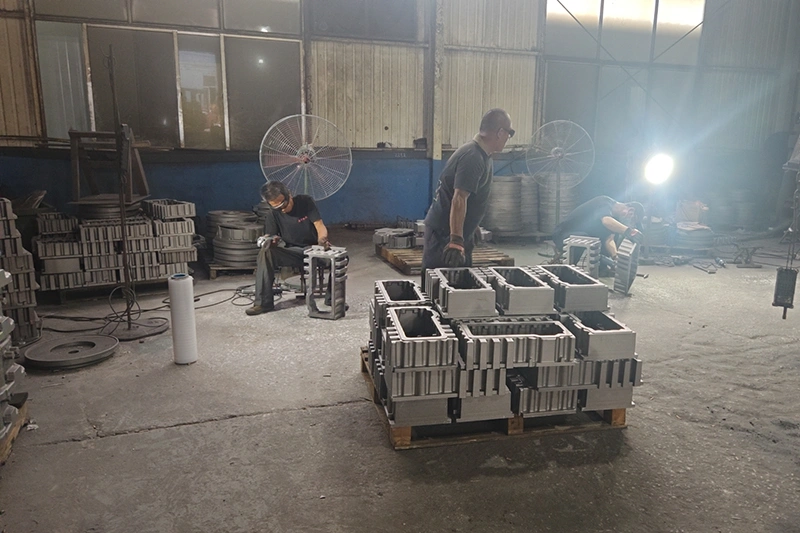Shrinkage in metal casting describes internal cavities or surface sink marks that form because molten metal contracts by roughly 1–6 % during solidification. Without properly placed risers to supply extra liquid metal, the solidifying metal cannot fill the volume loss, leaving voids that weaken the finished part.
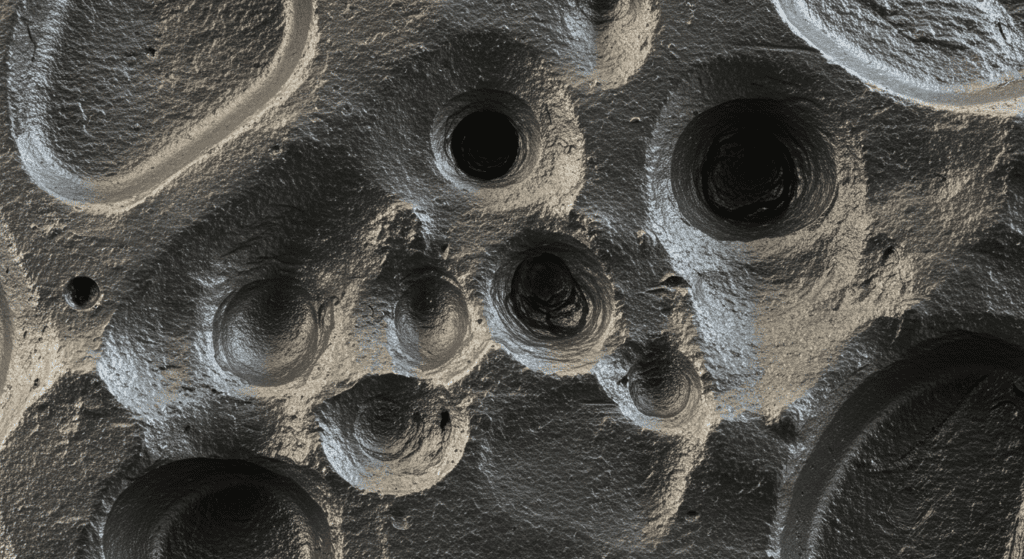
Shrinkage in casting refers to the volumetric contraction that occurs when molten metal cools and solidifies, resulting in a reduction in volume of the solid metal. Because metals are generally less dense in liquid form than in solid form, all cast metals experience shrinkage upon solidification. If this natural contraction is not properly compensated (for example, by supplying additional molten metal during solidification), voids or cavities can form within the casting.
These shrinkage-related voids are a common casting defect class, distinct from gas porosity. Notably, shrinkage voids tend to have irregular, jagged or angular shapes (due to the pulling apart of the solidifying dendritic network), whereas gas porosity holes are typically smooth and rounded.
Liquid shrinkage begins immediately after pouring molten metal into the mold. The metal contracts as it cools from its pouring temperature to its liquidus temperature (the point where solidification starts). During this stage, the metal remains completely liquid and can flow freely to compensate for volume changes.
Solidification shrinkage occurs as the metal transforms from liquid to solid at the freezing temperature. This stage causes the most significant volume reduction because atoms pack more tightly in the solid crystal structure. The metal cannot flow to fill voids once it solidifies, making this the most critical stage for defect formation.
Solid-state contraction happens after the metal completely solidifies and continues cooling to room temperature. The solid metal contracts uniformly in all directions during this stage. This contraction is generally predictable and causes overall dimensional changes rather than internal defects.
Open shrinkage defects connect to the atmosphere or the casting surface. These defects are visible during inspection and often appear at the top surfaces of castings. Two main types of open shrinkage exist:
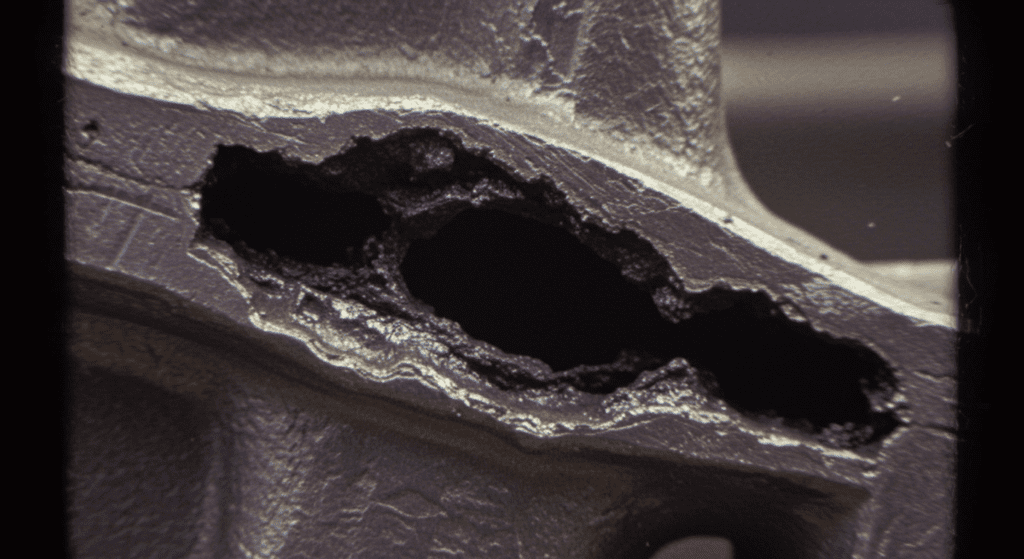
Closed shrinkage defects form entirely within the casting without connecting to any surface. These internal voids are harder to detect and require X-ray or ultrasonic testing. Three types of closed shrinkage commonly occur:
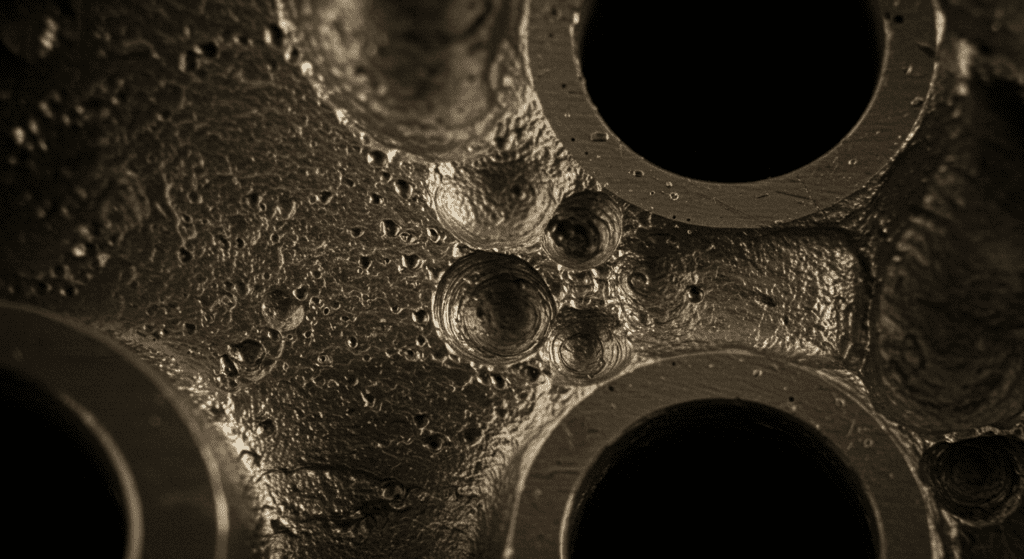
Eutectic solidification occurs at a single temperature where liquid transforms directly to solid without a mushy zone.
Eutectic alloys tend to form pipe-type shrinkage defects rather than dispersed porosity. The clear solidification front allows better feeding of liquid metal to compensate for shrinkage.
Directional solidification progresses from one end of the casting to the other in a controlled manner. This mode creates a temperature gradient that keeps liquid metal available to feed shrinking regions. Properly designed castings use directional solidification to push shrinkage into risers rather than the casting itself.
Equiaxed solidification creates a wide mushy zone where liquid and solid coexist throughout a temperature range. Aluminum alloys and many steels solidify this way. The dispersed solidification pattern makes liquid metal feeding difficult.
This mode typically produces micro-shrinkage and dispersed porosity rather than large cavities. The interconnected network of solid dendrites blocks liquid flow paths early in solidification.
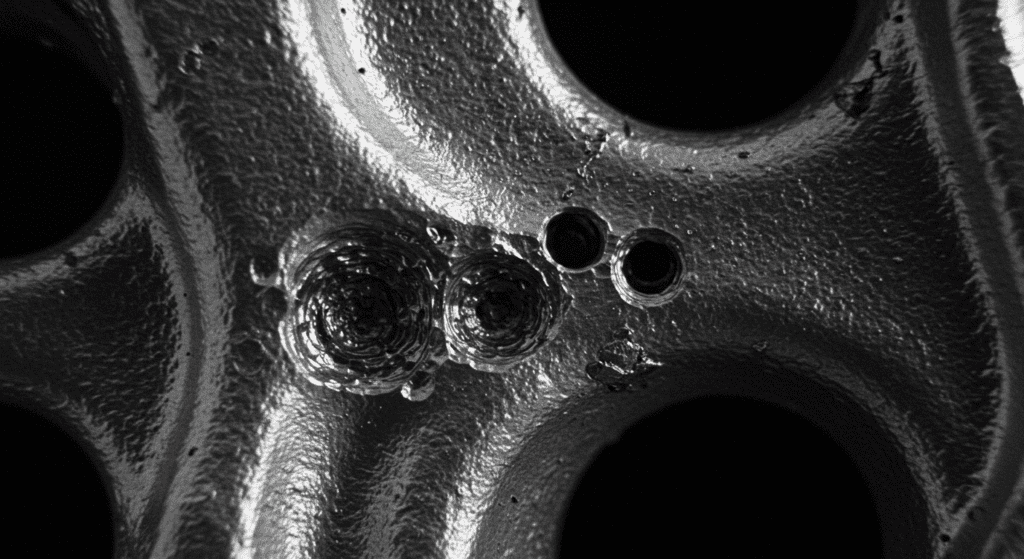
Casting geometry directly determines where and how shrinkage defects form. Certain geometric features create conditions that promote shrinkage:
The specific metal alloy and its solidification behavior strongly influence shrinkage defect formation:
How the metal is poured and cooled significantly impacts shrinkage defect formation:
Proper mold system design prevents shrinkage through:
Controlled cooling manages solidification patterns through:

